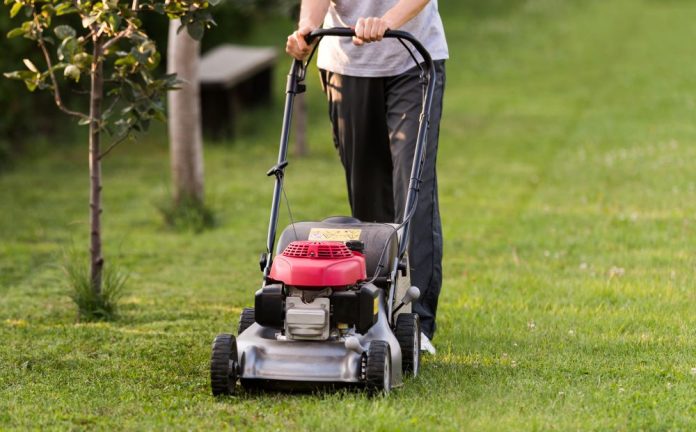A lush, vibrant lawn is one of the best ways to enhance the beauty of your home. Achieving that gorgeous green glow requires a bit of care and attention. But don’t worry; with the right practices, your lawn can stay healthy and thriving throughout the seasons. Here are some proven tips to help you keep your lawn in top shape.
1. Regular Mowing for Healthy Grass
Mowing your lawn regularly is one of the most important tasks to keep it looking neat and healthy. However, it’s essential to avoid cutting the grass too short. Keeping the grass at a height of 2.5 to 3.5 inches encourages deep root growth, which helps the lawn stay drought-resistant and healthy. When mowing, ensure your mower blades are sharp. Dull blades can tear the grass, leading to uneven cuts and making the lawn more susceptible to diseases.
Also, try to vary the mowing pattern every time. This prevents the grass from developing a grain and encourages it to grow in a more uniform manner. Lastly, never mow more than one-third of the grass blade’s height in a single mow. This will reduce stress on the grass and help it recover faster.
2. Watering the Right Way
Watering your lawn is another crucial aspect of maintaining that gorgeous green glow. One of the best practices is deep watering. Instead of frequent shallow waterings, aim for watering your lawn deeply but less often. This encourages the grass to grow deeper roots, making it more resilient to heat and drought.
Early morning is the best time to water your lawn, as it allows the water to soak in before the heat of the day. Avoid watering in the evening, as it can lead to moisture sitting on the grass overnight, increasing the likelihood of fungal diseases. Be mindful of the weather, too. If you’ve had a lot of rain, you may not need to water at all. Overwatering can be just as harmful as underwatering.
3. Fertilizing for Strong Growth
A well-fertilized lawn ensures your grass gets the nutrients it needs to grow strong and vibrant. However, it’s important to apply the right type of fertilizer and to do so at the right time of year. For most lawns, the best time to fertilize is in the spring and again in the fall. This gives your grass the nutrients it needs to thrive during the growing season and prepares it for the cooler months.
Consider using a slow-release fertilizer to avoid feeding your lawn too much at once. This type of fertilizer breaks down gradually, ensuring that your grass receives a steady supply of nutrients over time. If you’re unsure of what fertilizer is best for your lawn, a soil test can help determine what nutrients are lacking.
4. Aerating to Improve Soil Health
Aeration is a process that involves perforating the soil with small holes to allow air, water, and nutrients to reach the roots more effectively. Over time, lawns can become compacted, especially in areas with heavy foot traffic. This compacted soil makes it difficult for grass roots to grow deep, leading to a weaker lawn.
Aerating your lawn once a year, typically in the fall or early spring, can make a huge difference. If you have heavy clay soil or a lawn that experiences a lot of foot traffic, aerating more frequently may be beneficial. You can rent or purchase an aerator, or hire a lawn care service if needed.
5. Removing Weeds for a Clean Lawn
Weeds are an unwelcome presence on any lawn. Not only do they make your lawn look less tidy, but they also compete with your grass for water and nutrients. Regularly removing weeds is essential for maintaining a healthy, green lawn.
You can pull weeds by hand or use tools like a weed digger to target the roots. For a more thorough approach, you might consider using a professional service like American Lawnscape for weed removal. They can help you get rid of stubborn weeds and ensure your lawn is free of unwanted plants. They have the tools and experience to treat the root of the problem, not just the surface. With their help, your lawn can stay healthy and weed-free all season long. Remember, early intervention is key to preventing weeds from taking over. Regularly check your lawn for signs of weeds and address them before they have a chance to spread.
6. Controlling Pests and Diseases
Insects and diseases can wreak havoc on your lawn if left unchecked. It’s essential to stay vigilant and look out for signs of pest damage or fungal infections. Common pests like grubs, chinch bugs, and ants can weaken your grass and make it more prone to disease.
To prevent pest problems, keep your lawn healthy with proper care—mowing, watering, and fertilizing regularly. If you notice signs of pests or disease, address them promptly. In some cases, you may need to apply insecticides or fungicides, but always follow the instructions carefully. Using natural pest control methods, such as encouraging beneficial insects like ladybugs, is another great option.
7. Overseeding for a Fuller Lawn
Overseeding is the process of sowing grass seed over your existing lawn to encourage new growth. This is particularly helpful for lawns that are thinning or have bare spots. By overseeding, you can fill in those gaps and create a fuller, more even lawn.
The best time to overseed is during the cooler months of fall or early spring. Be sure to choose a grass seed that’s suited to your region and climate. After overseeding, it’s important to keep the lawn well-watered, as the new seeds need moisture to germinate. Once the grass begins to grow, gradually reduce the watering.
Conclusion
Maintaining a gorgeous green lawn takes effort, but with the right care, you can enjoy a lush, healthy yard all year long. By following these proven tips, you’ll be well on your way to achieving the perfect lawn. Regular mowing, proper watering, and addressing weeds and pests promptly are all essential steps in keeping your lawn looking its best. With a little attention and consistency, your lawn will remain the envy of the neighborhood.




